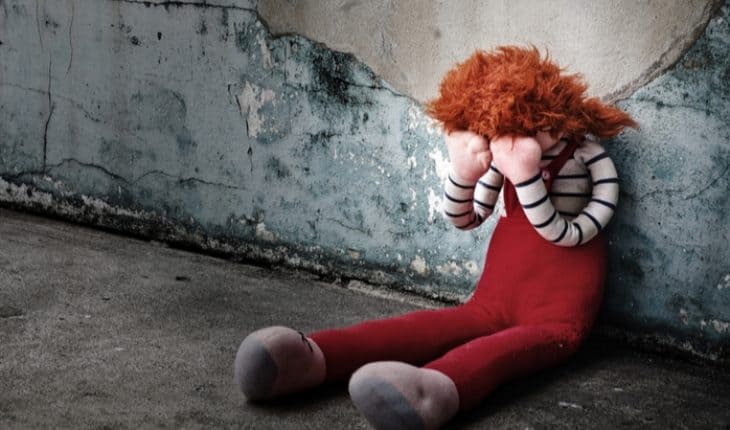The damaging impact of poverty on children and their families and the growing problem of exploitation are revealed in a new report by researchers at the University of East Anglia (UEA) and University of Warwick.
In cases of neglect they found a cumulative risk of harm to a child when different parental and environmental risk factors are present in combination or over periods of time. For example, the complex ways in which the links between domestic abuse, substance misuse and poverty are often inter-dependent, so that addressing a single issue does not deal with the underlying causes or other issues present.
The triennial analysis of serious case reviews (SCR) also found an increase in the number involving adolescents, which produced new insights into the threats some of these young people, both those living at home and in care, were experiencing from various aspects of exploitation.
Criminal exploitation covers a range of activities that victimise the child, including moving drugs, violence, gangs, sexual exploitation, missing children, and trafficking. Some children were both victims and perpetrators of harm to other children and all needed support and safeguarding.
A SCR takes place after a child dies or is seriously injured and abuse or neglect is thought to be involved. It looks at lessons that can help prevent similar incidents from happening in the future. Commissioned by the Department for Education, this latest triennial analysis is based on 368 SCRs carried out in England from April 2014 to March 2017.
Of these 206 related to fatal cases, with 78 directly caused by the parents or carers of the child – equivalent to 26 cases per year which is consistent with previous analyses. A further 106 deaths related to but were not directly caused by maltreatment, including sudden unexpected deaths in infancy, suicides in adolescents, and deaths from accidents or medical causes where neglect was a contributory factor. Ten children were killed by people outside the family, and for 12 the cause was not clear or not related to maltreatment.
While the number of SCRs fluctuates year on year, the number of children who die as a direct consequence of maltreatment has remained relatively stable at around 28 a year. This is despite a steady year on year increase in child protection activity nationally.
During the time frame of this review, just 54 of the children who died or were seriously harmed were on a child protection plan (15%), suggesting that children with a child protection plan in place are generally well protected from the most severe harm. Complexity and cumulative harm were almost invariably features of families where children experienced neglect.
The analysis was led by Marian Brandon, professor of social work and director of the Centre for Research on Children and Families at UEA, and Peter Sidebotham, emeritus professor of child health at Warwick Medical School. It is the sixth consecutive national analysis of SCRs carried out for the government by the research team.
Prof Sidebotham said: “As we looked into the reviews of children affected by serious and fatal child maltreatment over these three years, we were struck by the complexity of the lives of these children and families, and the challenges – at times quite overwhelming – faced by the practitioners seeking to support them in such complexity.”
Pressure points were found at the boundaries into and out of the child protection system, and the need, in many cases, for ongoing support and monitoring of vulnerable children and families. The majority of children in SCRs were known to children’s social care (55%), although most were not directly involved with the child protection system.
Infancy and adolescence represent the periods of greatest vulnerability to serious or fatal child maltreatment. The researchers say working with vulnerable adolescents requires openness and opportunities for young people to explore their concerns with practitioners without fear of criminalisation, for example, in relation harmful sexual behaviour.
Prof Brandon said: “Practitioners can feel unprepared for working with adolescents vulnerable to exploitation and need ongoing training and support. Likewise, even if practitioners feel confident and knowledgeable about technology use, they may still struggle to support a young person’s usage in an ever-changing digital world and relevant, up-to-date training is essential.”
She added: “Children in care or going through court processes have particular needs that require careful assessments, monitoring and support. Assessments should not only look at what has happened to the child in the past and what that implies for their needs now, but also look to the future and what help will be needed as the child grows.”
A recurring theme among the reviews that identify good practice is the quality of relationships with families. A good relationship with families is the primary vehicle for protective practice when it is based on a sound grasp of the family context, circumstances, and roles and relationships as an effective way of managing the complexity of compound and cumulative risk over time.
“Effective protective practice requires an ability to contextualise the lives of vulnerable children, understand the experience and perspectives of their parents or carers and engage with them through meaningful interactions and relationships with the professionals that are involved in their lives,” said Prof Sidebotham. “This includes hearing the voice and understanding the lived experience of the child.”
In relation to effective multi-agency working, he added: “The language we use to talk about children’s circumstances can both support and hinder effective safeguarding. Vague, stock phrases and jargon can minimise or obscure the reality of a child’s life. Fragmentation of services, with different front-line providers within the same agency, can lead to silo-working within as well as between agencies.”
The researchers conclude that demonstrating the impact of SCRs on practice or outcomes for children is challenging, and that a preoccupation with process, tick-box responses, and organisational change can all present barriers to effective learning and impact.
However, strengths in delivering impact included the positive elements that come from providing opportunities for reflection on practice and particularly from the story of the child at the centre of the review.
- Gut microbiome could delay onset of type 1 diabetes - 3rd April 2025
- The da Vinci 5 Robot Is Set To Transform Bariatric Care: - 31st March 2025
- Beyond money: the hidden drivers fuelling child food insecurity - 31st March 2025






